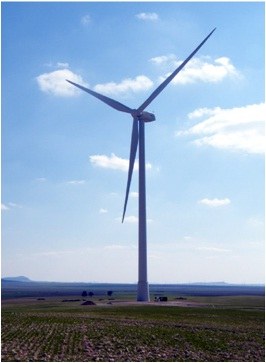Wind Turbines

At present the wind power has taken a stand as the clean and renewable source of energy with more possibilities to replace part of the more polluting and scarce conventional means of generation of electricity. This is a consequence, partly, of the development of new technologies and materials, giving rise to wind turbines of larger scale, more reliable and effective. In this context, control plays a very important role, since it not only allows a more effective exploitation of the wind turbine, but also reduces its aerodynamic and mechanical charges, with the consequent increase of its useful life. The control of the wind turbines has been approached with a great variety of non linear control tools. More recently, the control has been brought up within the framework of the LPV systems, with the objective of considering explicitly the uncertainty of the models and to obtain controls for programming of profit with guarantees of stability. Although the LPV controllers allow a more rigorous design, there is still a gap left for the application to commercial wind turbines. In particular, it is necessary to approach numerical aspects that minimize the lineal calculations, with the aim of its implementation in industrial computers. Likewise, it is necessary the approach of tools to translate the complex models of wind turbines to models directed to the control, which implies the reduction of its order and the determination of its uncertainty levels.
The SAC group has collaborated in these subjects with the company ECOTECNIA and the group wants to have simulations of high faithfulness and real wind turbines. The problems are similar to the previous case, with the addition of the phenomena of flexibility of the structures, for its size.
Share: